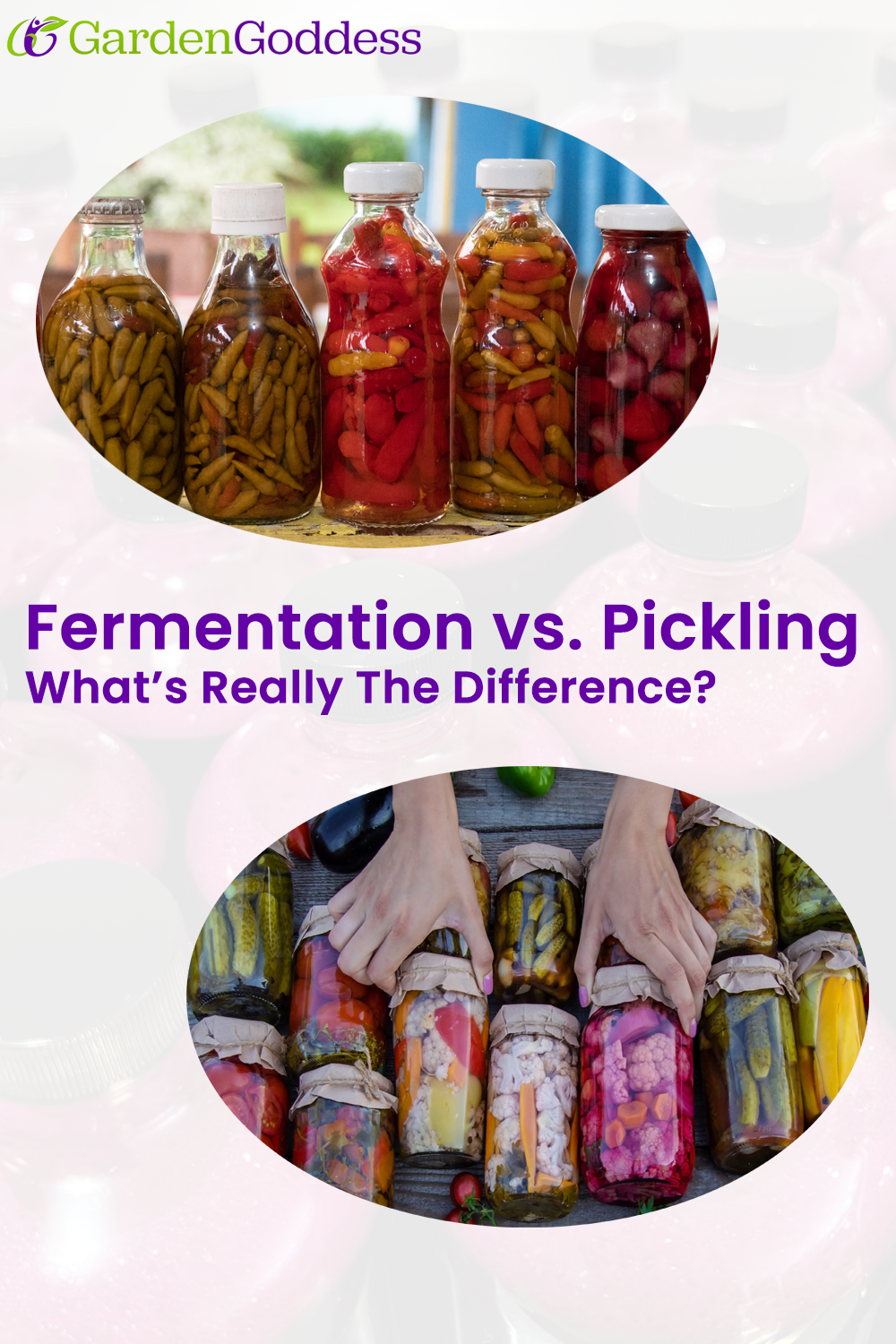Your cart is empty
Already have an account? Log in to check out faster.


Walk into any grocery store and you'll see jars of "pickled" everything lining the shelves. But here's something that might surprise you: most of what we call "pickles" today aren't actually pickled at all—they're fermented. And yes, there's a huge difference that goes way beyond taste.
As bacteria farmers here at Garden Goddess Ferments, we get this question constantly at Phoenix farmers markets. People are genuinely curious about what makes our sauerkraut and beet kvass different from the jarred versions they see in stores. The answer lies in understanding two completely different preservation methods that have been feeding humanity for thousands of years.
Pickling uses acetic acid (usually vinegar) to make food shelf stable by killing the bacteria. Fermentation uses beneficial bacteria to create lactic acid naturally over time, transforming the food's nutritional profile in the process.
Pickling is straightforward and fast. You take your vegetables, submerge them in an acidic solution (typically vinegar mixed with water, salt, and spices), and voilà—you've got pickled vegetables that can last months in your pantry.
The acetic acid environment prevents harmful bacteria from growing, essentially "pausing" the food in time. What you put in the jar is essentially what you get out, just with a tangy flavor and extended shelf life. The process takes hours, not weeks.
Fermentation is where the magic happens, and it's what we specialize in at Garden Goddess Ferments. Instead of adding acid, we create the perfect environment for beneficial bacteria (primarily lactobacillus) to thrive. These microscopic workers consume the natural sugars in vegetables and produce lactic acid as a byproduct.
This process takes weeks, not hours. Our sauerkraut ferments for a minimum of three weeks, while our beet kvass develops its complex flavor profile over several weeks of careful cultivation. During this time, the bacteria don't just preserve the food—they transform it.

Here's where fermentation truly shines: it creates food that's more nutritious than what you started with. Those beneficial bacteria produce:
Probiotics: Live microorganisms that support your gut health
Enhanced vitamins: Fermentation can increase B vitamins and vitamin K2
Better mineral absorption: The fermentation process makes minerals more bioavailable
Enzymes: Natural enzymes that aid digestion
Beneficial compounds: Like short-chain fatty acids that feed your gut lining
Pickled foods, while delicious, don't offer these benefits. The acetic acid that preserves them also prevents the growth of beneficial bacteria.
From a flavor perspective, pickled foods have a sharp, one-note acidity—that familiar "pickle" taste we all know. Fermented foods develop complex, layered flavors. Our sauerkraut has a tangy depth with subtle earthy notes, while our beet kvass offers a rich, slightly effervescent taste that's both earthy and refreshing.

The difference is like comparing a photograph to a painting—both capture the subject, but one has depth and nuance that develops over time.
Here's something that blows people's minds: traditional dill pickles were originally fermented, not pickled. Cucumbers were packed in salt brine and left to ferment naturally. The "pickles" most of us grew up with are actually quick-pickled in vinegar for mass production efficiency.
The same goes for most commercial sauerkraut. Real sauerkraut contains only cabbage and salt—that's it. The bacteria do all the work. But walk down the grocery aisle and you'll find "sauerkraut" loaded with vinegar, preservatives, and sometimes even pasteurized to kill any remaining beneficial bacteria. All to make it shelf stable and not need refrigeration.
Perhaps the biggest distinction is that fermented foods are alive. When you eat our sauerkraut or drink our beet kvass, you're consuming billions of beneficial bacteria that can positively impact your gut microbiome. These foods need to stay refrigerated because the bacteria are still active (though much slower in cold temperatures).
Pickled foods are shelf-stable precisely because they're not alive—the acidic environment prevents all bacterial growth, beneficial or otherwise.
Both have their place! Pickled foods are great when you want:
Quick preservation
Shelf-stable storage
Familiar tangy flavors
Simple preparation
Fermented foods are the choice when you want:
Maximum nutritional benefits
Probiotic support for gut health
Complex, developed flavors
Living food that continues to evolve
See how you can easily add fermented foods to your meals.
At Garden Goddess Ferments, we're passionate about true fermentation because we've experienced firsthand how these living foods can transform health. Our beet kvass undergoes a careful fermentation process that creates a probiotic-rich drink with a complexity you simply can't achieve through pickling. Our sauerkraut ferments slowly in small batches, developing the kind of beneficial bacteria diversity that supports optimal gut health.
We're not just preserving vegetables—we're cultivating beneficial bacteria that have been nourishing humans for millennia.
The next time you're shopping for "pickled" foods, take a moment to read the label. If you see vinegar as a main ingredient, you're looking at a pickled product. If you see only vegetables and salt, you've found the real deal—a fermented food that's been transformed by beneficial bacteria into something far more nutritious than its original form.
Your gut will thank you for knowing the difference.
0 comments